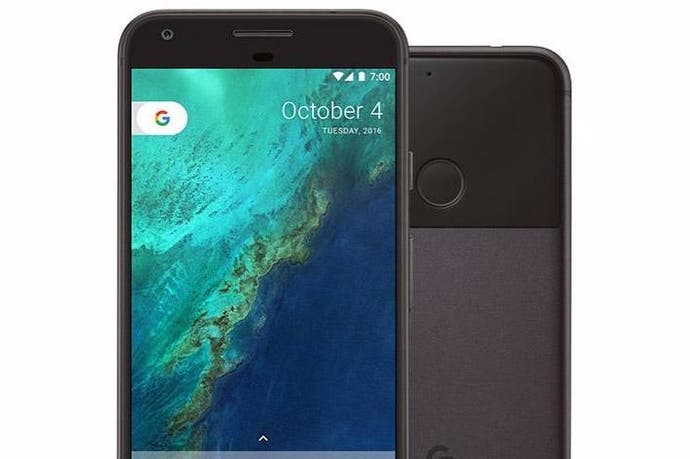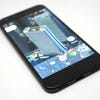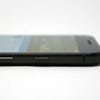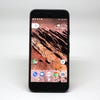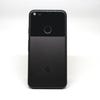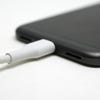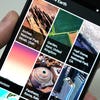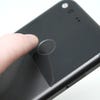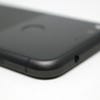Google Pixel review
Pixel perfect?
When Google announced the Nexus One back in 2010 it marked an important turning point for the company's Android mobile operating system. While Google's vision had always been different to Apple's - the aim being to create an OS standard that other hardware manufacturers could support, like Microsoft's Windows platform on computers - what was badly needed was a standard-bearer; a handset that would get a "pure" version of the OS and serve as a benchmark for others to imitate. The Nexus program was exactly that; Google worked with hardware partners like HTC, Samsung, LG, Motorola and Huawei to create a new Nexus device every 12 months, each of which would get Android updates before any other phone. Unsurprisingly, the Nexus line quickly became very popular with dedicated Android users tired of the awkward custom UI skins and annoying bloatware so common on the majority of handsets.
At the end of 2016 however, Google decided to kill off the Nexus name. While this might seem like a rather extreme move, the company's next flagship phones - the Pixel and large-screen Pixel XL - are Nexus devices in all but name. What has changed this time around is Google's approach; while the firm was happy to allow hardware partners to shape previous Nexus offerings in their own image, the Pixel has been designed from the ground up by Google itself, with HTC drafted in to handle production. However, you won't see HTC's logo anywhere on the casing - instead, there's a large "G", which leaves you in little doubt regarding which company is responsible.
Shedding such a famous name might seem like a foolhardy venture, but there's another reason for Pixel - Nexus devices have had a reputation for offering cutting-edge tech at mid-range prices, but Google now wants to compete with the higher end of the market; in short, it wants to the Pixel to be a match for the iPhone and Galaxy S range. That means powerful internals, premium materials and - of course - a price tag in the region of £700, SIM-free. Google isn't trying to undercut its rivals this time around; it wants to create a handset that has the prestige of an iPhone - and it has succeeded.
In fact, at first glance it feels like Google has been a little too literal when it comes to imitating the success of the iPhone; the Pixel shares a lot of design language with Apple's handset. The rounded sides, 2.5D curved screen edges and notable antenna bands look like they've been lifted from the iPhone 6 series. However, it's fair to point out that there's little scope for design innovation in the mobile arena these days, and the Pixel does has come with some noteworthy differences. The two-tone design of the back is sure to divide opinion; the bottom half is metal while a glass panel sits at the top, encasing the camera module and fingerprint scanner. Elsewhere, there's a 3.5mm headphone socket on the top edge while the bottom has a USB Type-C port and a single speaker. The power button and volume rocker are on the right-hand side, and the Nano SIM tray on the left-hand side. Irrespective on how you feel about Google's design choices, the Pixel feels like a premium phone - it's just a shame that it's not waterproof. 2016 was the year that Apple finally embraced this feature after years of it being the sole preserve of Android handset makers such as Samsung and Sony, and for the Pixel to lack such a selling-point is unfortunate, though not a deal-breaker.
Like the Nexus 5X and 6P before it, the Pixel's fingerprint scanner is mounted on the rear of the device rather than on the front (as it is on Apple and Samsung's phones). It's easy to argue the merits of both; on the Pixel, your finger naturally rests on the back on the handset and this allows you to unlock it from the moment it emerges from your pocket. However, you can't unlock the device when it's lying face-up on a flat surface, and in that respect a front-mounted scanner is arguably preferable. Placement aside, the scanner here is fast and accurate - perhaps even more so than the iPhone 7's. You can wake the device and unlock it with a single touch, and it's so responsive you may even find yourself accidentally turning on the Pixel just by brushing your fingers across its back.
Flipping the Pixel over reveals a rather blank front, another consequence of having the fingerprint scanner on the rear. Mercifully the moment the phone is awake this area springs to life thanks to the gorgeous full HD AMOLED screen. Pin-sharp, bold, bright and packing striking contrast, it's easily one of the phone's strongest features, and because it's AMOLED - black pixels are effectively turned off and therefore consume no power - the phone benefits from Android's "Ambient Display" feature that shows the time, date and any pending notifications you have without you having to wake the device itself. This feature kicks in when an email, text or any other alert is fired, or when you pick up the phone. You can also double-tap the screen to trigger it if the handset is resting on a flat surface.

| Google Pixel | iPhone 7 | iPhone 7 Plus | Galaxy S7 | Xiaomi Mi5 | LG G5 | Nexus 5S | |
|---|---|---|---|---|---|---|---|
| Geekbench Single-Core | 1687 | 3000 | 3306 | 2171 | 1918 | 2077 | 1263 |
| Geekbench Multi-Core | 4187 | 5330 | 5345 | 6465 | 4616 | 4135 | 3436 |
| 3DMark Graphics | 31766 | 63668 | 62595 | 32404 | 27463 | 31787 | 22074 |
| 3DMark Physics | 18641 | 15267 | 15231 | 17730 | 18913 | 21268 | 12641 |
| 3DMark IceStorm Unlimited | 27468 | 37352 | 37015 | 27370 | 26639 | 28639 | 18934 |
| GFXBench T-Rex | 93.0 | 120.1 | 122.4 | 87.0 | 72.0 | 86.0 | 38.0 |
| GFXBench Manhattan | 49.0 | 62.3 | 63.2 | 29.0 | 25.0 | 31.0 | 16.2 |
Nexus phones have traditionally featured quite beefy internal tech and the Pixel looks to continue this commendable trend. At its core is the Qualcomm MSM8996 Snapdragon 821, a quad-core chipset which is comprised of 2.15GHz Kryo and 1.GHz Kryo cores working in pairs, while an Adreno 530 graphics processor handles the visuals and 4GB of RAM keeps things ticking over. While the 821 is an incremental update on the existing 820 - which appeared in the Galaxy S7, Xiaomi Mi5 and LG G5 - it does bring a slight performance boost, as illustrated by benchmark tests. Numbers aside, the user experience is - on the whole - a smooth one; there are the traditional moments of lag when Android has too many plates in the air at once, but these are few and far between. By and large, the Pixel really flies regardless of what task you choose to push in its general direction.
Google's own phones are always the first to get new Android updates, and the Pixel is of course no exception. Android Nougat made its debut on the device and - at the time of writing - has been updated to version 7.1.1. Nougat marks a quite notable evolution of Google's mobile OS, with visual and UI changes felt pretty much everywhere you look.
Swiping from left to right reveals your Google landing screen, previously known as Google Now. This is very similar to what has gone before, but Google's Personal Assistant has been given a real boost. Holding down the home button opens the assistant, which is now capable of engaging in human-like conversation and delivering replies that relate to previous questions. Ask about the weather, and the assistant will reply with a witty comment like "You may want your raincoat" as well as providing on-screen detail about precipitation and temperature. You can then ask "What about this weekend?" and get weather info for that period. You can ask what movies are showing locally, where to eat and much more besides. The more you use Google Assistant, the more it learns about your everyday needs and activities, offering a more tailored approach, but if you're uneasy about Google digging into your search and web history, you might be less enamoured.
Google has made some welcome cosmetic changes to Android which make the whole UI feel more fresh and alive. The app drawer icon is gone, and instead you have to swipe up from the bottom of the display to see your installed applications. The Google search bar - a common feature on Android phones from the start - has now been replaced by a pop-out widget in the upper-left corner of the screen. However, our favourite change relates to wallpapers, as superficial as that may sound; Google has introduced "Live Earth" images which leverage data from Google Earth and present a full 3D image for your phone's screen. When you unlock the device this image slowly shifts, and swiping between home screen changes perspective. The shot of a high-rise building in Tokyo's Shinjuku district is especially striking, as is the Pantheon in Rome. Hopefully Google will add more of these special wallpapers in the future. Elsewhere, there are now long-press pop-up menus on app icons which allow you to quickly jump to a task without having to actually open the app - a feature borrowed from the iPhone which uses 3D Touch to achieve the same functionality.
Gaming on the Pixel is as you'd expect; smooth and enjoyable. We put the phone through the usual tests, trying a mixture of complex 3D titles such as Real Racing 3, Asphalt 8: Airborne and Warhammer 40K: Freeblade, and the handset passed with flying colours. The impact of such graphically-rich offerings is notably enhanced by that punchy AMOLED screen; colours really pop and the deep contrast is striking. The only downside with gaming on this handset is the positioning of the mono speaker; it's too easy to accidentally cover it with your hand, muffling the audio. It's worth noting that the Pixel is the first phone to come with support for Google's new Virtual Reality standard, Daydream. Sadly we're weren't able to test this aspect as we don't have access to a headset, but adopting Samsung's Gear VR approach - where the cost of entry is subsidised by using the phone as the "guts" of the headset - is a clever idea on Google's part, and as more Android handset makers include Daydream support we can expect to see interest in mobile VR skyrocket.
When it comes to mobile photography, Google's Nexus range didn't have the best reputation. Google would come out with the same platitudes regarding how the camera on this year's Nexus was "the best ever", but more often than not the results were disappointing; software that was lacking in features and shot speed that was left in the dust by Apple and Samsung's efforts. It would seem that these issues may have been the fault of the disconnect that existed between Google and the companies creating the Nexus devices, as the Pixel is packing some of best photographic talents yet seen on an Android device - and no, those aren't Google's words, but ours.


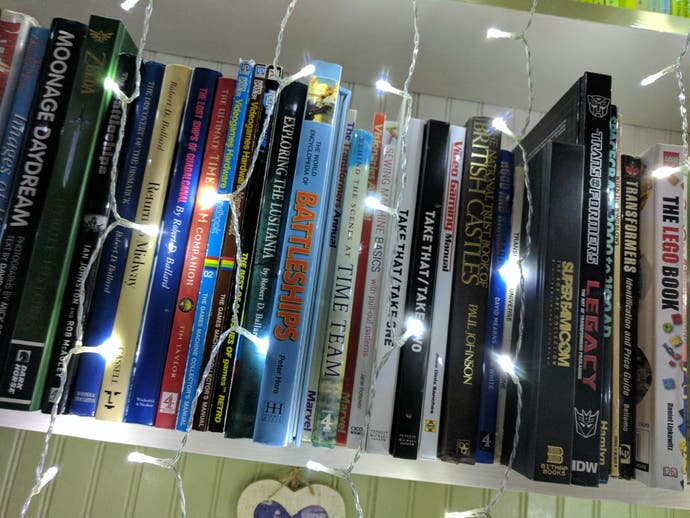
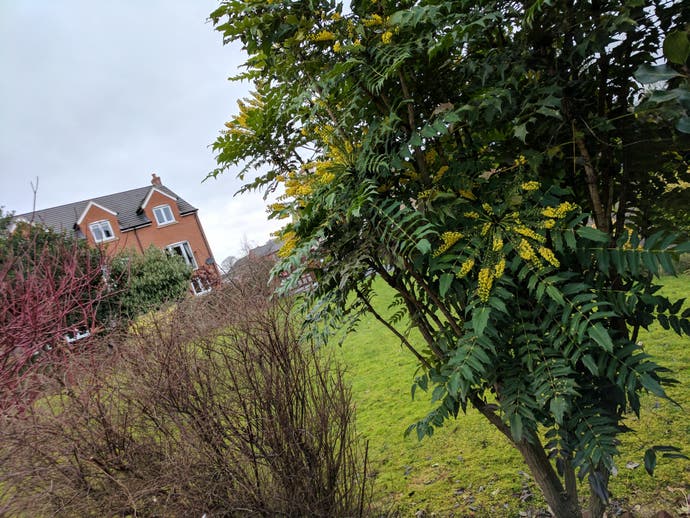
While the camera app can sometimes (but not often) take a second or so to boot up, focus time is on par with that of the iPhone 7 and image quality is impeccable. Low-light shooting is also impressive, with the Pixel able to pull off a decent image even in a room with very few sources of illumination. The main rear-facing camera has a 12.3 megapixel resolution, f2.0 aperture and both phase detection and laser auto focus. Another welcome feature is Google's deployment of HDR; it's enabled by default but doesn't slow down your image capture; instead, HDR is applied in the background, allowing you to keep taking shots with having to wait. HDR+ is also included, but using this does incur a slight wait. Video capture tops out at 4K, 30fps, and quality is excellent. All in all, this is comfortably the best camera to ever ship on a phone bearing Google's name, and is certainly comparable to the sensors seen in the iPhone 7 and Galaxy S7.
On to the less exciting stuff, the Pixel's 2770 mAh battery offers decent but hardly stunning stamina. Getting through an entire day was never an issue during our review period, but the next morning a full charge was definitely required. Thanks to the fact that the Pixel has a true USB Type-C connection rather than old-school USB to USB Type-C lead - something many other manufacturers ship with their phones - charging time is super-swift. Storage options are 32GB and 128GB, with the latter coming at a notable premium. There's no means of expanding storage - something which is present on the Galaxy S line of phones - so you may find the 32GB model to be a little restrictive in terms of space, even if you make use of Google's many cloud-based storage options such as Google Photos, Google Music and Google Drive. Finally, the Pixel's call quality is superb, even when speaking in busy environments with a lot of background noise.
Google Pixel: the Digital Foundry verdict
Google's previous Nexus devices were excellent, and combined impressive tech with a pure Android experience, making them the phones of choice for seriously dedicated fans of the OS. However, they were rarely perfect in every way, with aspects like camera performance and build quality proving to be somewhat disappointing. With the Pixel, Google has made a bold attempt to not only give its flagship parity with premium rivals, but also have full control over every aspect of the software to hardware. The result is comfortably the most accomplished mobile phone to ever carry the Google logo; HTC - which handles manufacturing - has done an excellent job here but it's clear that Google's hand was guiding the project from inception to final production. Lack of waterproofing and expandable storage are the only genuine causes for complaint; in every other respect, this is perhaps the best Android phone ever produced, although we're sure that title will be passed on fairly quickly as Google's hardware partners release their 2017 flagships. Even so, they have a solid template to imitate in the Pixel.
Google Pixel review unit kindly provided by Mobile Fun.
